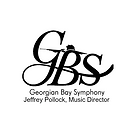Program Notes: Bravo! Beethoven!
- georgianbaysymphony
- Mar 21, 2018
- 3 min read
Piano Concerto No3. In A Major
Beethoven considered this work the best of his first three piano concertos, a judgment still maintained today. Yet its premiere in Vienna on April 5, 1803, was hardly auspicious. It marked Beethoven’s first public failure as performer and composer. The music was not appreciated, and his playing of the solo part was criticized, perhaps understandably in light of the situation described by Beethoven’s friend Ignaz von Seyfried, who turned pages: “I saw almost nothing but empty leaves; at the most on one page or the other a few Egyptian hieroglyphs wholly unintelligible to me, scribbled down to serve as clues to him. He gave me a secret glance whenever he was at the end of one of the invisible passages, and my scarcely concealable anxiety not to miss the decisive moment amused him greatly.” Also on the program of this enormous concert were two more Beethoven premieres - the Second Symphony and the oratorio Christ on the Mount of Olives - as well as the First Symphony.
Although laid out in the traditional three-movement format of fast - slow - fast, this concerto departs somewhat from previous concerto style, particularly in its emotional depth and drama, and in the intricacy of interaction between soloist and orchestra. The opening orchestral passage is the longest of any Beethoven concerto, and is outstanding for its urgency and sense of reserved power. A second theme in E-flat major, lyrical and flowing, provides contrast of mood as well as of tonality. Both piano and orchestra develop these themes with considerable complexity.

The second movement, in the remote key of E major, is characteristically slow, reflective and deeply moving. Soloist and orchestra are more often heard individually than together. The soloist announces the sublimely beautiful, hymn-like subject in a twelve-bar solo, which is then repeated by the orchestra in its richest sonorities. The piano initiates the second paragraph, and only afterwards do piano and orchestra begin to mingle.
In the finale, Beethoven combines elements of both rondo and sonata form. Startling harmonic sidesteps, a short fugal development, a brief cadenza and a presto coda all contribute to the sustained interest in this movement, one imbued throughout with verve, vigor and rhythmic energy.
--Robert Markow
Symphony No 7 in A Major
Beethoven’s Seventh Symphony in A Major may not be quite as famous as the Fifth or Ninth, it was however featured in the movie The King’s Speech (2010). if you saw the film you will remember the climactic scene: the king addresses millions of citizens over the radio, hesitantly, but passionately and firmly. The music that underscores the scene is the second movement (Allegretto) of this symphony. With its ostinato (repeated rhythmic phrase) – long-short-short-long-long – it was a good musical fit for the gravity of the scene and the king’s halting conviction.
This symphony was premiered in December 1813, at a benefit concert for soldiers wounded in the fight against Napoleon’s army. Unlike some of Beethoven’s works, it was immediately popular, and was repeated several times in the weeks following its premiere. The second movement especially appealed to audiences, and it was not unusual for it to be performed as a separate work during the 19th century. Written in the standard four-movement form, Symphony No. 7 begins with a slow expanded introduction, which is followed by a Vivace in sonata form, in a dance-like triple meter. The second movement is in A minor, which – unlike a more distant key like F# minor or E, keeps the Allegretto closely bound to the more exuberant movements around it. The third movement, Presto, is almost like a rondo, with the A-B juxtaposition recurring several times (instead of the more usual A-B-A). The finale, Allegro con brio, is in a furiously energetic 2/4 meter, with a recurring emphasis on the second beat of the measure (it’s hard to miss at the beginning of the movement).
Beethoven’s famous rhythmic ingenuity is a pillar of this symphony. Many critics emphasized its wild energy in their writings; Richard Wagner wrote of this piece that “the Symphony is the Apotheosis of the Dance itself: it is Dance in its highest aspect, the loftiest deed of bodily motion, incorporated into an ideal mold of tone.” This piece is scored for a typically “classical” orchestra, with pairs of woodwinds and brass; Beethoven’s writing for the horns is especially dramatic and dynamic. Overall, the rhythm of this symphony, its dance-like and sophisticated rhythms, and the famous second movement make it one of Beethoven’s most interesting and powerful symphonic works.
Symphony No. 7 and the famous “Immortal Beloved” letters were written at the same time and it seems likely that the same depth of positive emotion informed them. For a man who already knew loss in a measure beyond what he deserved, it is thrilling to view Beethoven’s exuberant, celebratory A Major Symphony as the musical translation of a very real, if fleeting, happiness.




















Comments